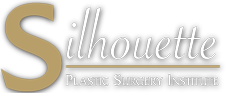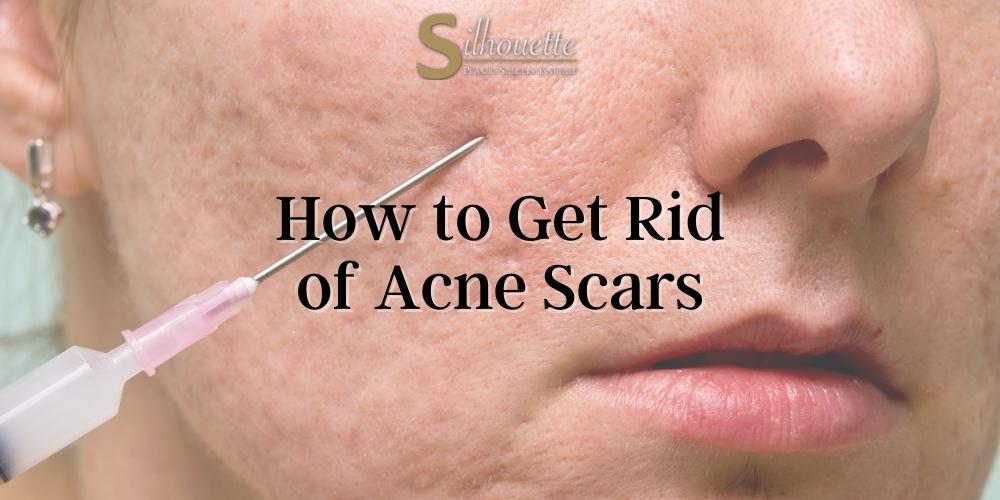Acne lesions – AKA pimples – can put a huge damper on anyone’s self-esteem. What’s worse is what comes after the pimple: the acne scar. It’s a permanent reminder of the former gnarly pimple that you fought so hard to get rid of. Most commonly, acne scars result from a long history of severe acne. But even people with the occasional pimples can have a few acne scars here and there. Treating acne scars can feel hopeless, especially with at-home creams and face masks. Below, the team at our Bakersfield Med Spa discusses how to get rid of acne scars for good.
If your self-confidence is suffering due to constant breakouts and noticeable acne scarring, you may be a good candidate for one of our many professional skin treatments. Call 949-359-8397 to schedule an appointment at the Bakersfield Med Spa at Silhouette Plastic Surgery Institute today.
What are Acne Scars?
Possibly the only thing worse than acne is acne scarring – the result of some really gnarly pimples on the outer layer of skin. Acne scars occur once the skin heals from a pimple. People with moderate to severe acne tend to experience scarred skin the most often. But people with mild acne can have an acne scar here or there too.
During the healing process, the body will respond just like it does to any other skin wound – by producing collagen. If there is too much collagen production in such a small area of the face, a raised scar may appear. The acne scars that look like tiny pits in the skin are caused by a loss of tissue in the area.
Acne Scars Types
There are different types of acne scars, including atrophic scars (or depressed scars) and raised scars (or hypertrophic scars). There are a few types of acne scars that fall under the depressed or atrophic category, and they include:
- Boxcar Acne Scars are wide indents in the skin with sharp edges. Some boxcar scars are pretty shallow, while others are deep. Shallow scars tend to respond better to acne treatment methods like laser resurfacing.
- Rolling Scars are also wide indents, but they tend to have round, sloping edges. The sloping edges of these scars tend to make the skin look uneven and wavy, like that small spot of the skin is “rolling,” hence the name.
- Icepick Scars are deep, V-shaped holes in the skin. They may closely resemble chicken pox scars. This type of acne scarring is the most difficult to treat because they extend the deepest into the skin.
Hypertrophic, or raised, acne scarring occurs when the skin produces too much collagen during the healing process. So these scars can look like tiny bumps or skin tags. They are most common on the chest, back, and shoulders.
How to Get Rid of Acne Dark Spots
Acne scarring can take a huge toll on someone’s self-confidence. Luckily, there are plenty of treatments out there that can reduce acne scars or even remove acne scars. The type of treatment you need will heavily depend on the type of acne scars you have. Below, we list several acne scar treatments that our Bakersfield Medical Spa offers, and we explain which types of acne scars that these treatments target best.
Microdermabrasion Acne Scars
Microdermabrasion is a type of exfoliation procedure that removes the outer layer of skin in order to treat acne scars, age spots, dark spots, uneven skin tone, and more. You can buy microdermabrasion kits to use at home, but they likely won’t be as effective as professional Med Spa treatments.
Microdermabrasion can reduce the appearance of shallow acne scars – like boxcar or rolling scars. Meanwhile, dermabrasion is a more invasive form of exfoliation that targets the deeper levels of skin. So dermabrasion would be best for removing deep acne scars, such as icepick scars.
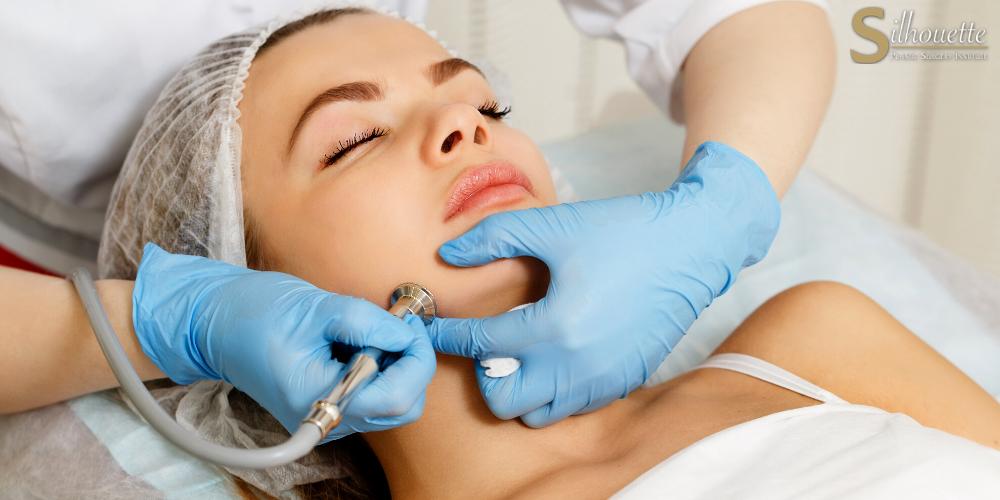
Laser Treatment for Acne Scars
Laser skin resurfacing is a safe and effective treatment for acne scars, fine lines and wrinkles, age spots, stretch marks, sun spots, chickenpox scars, and so much more. There are a few types of laser resurfacing treatments, but one of the most popular types is CO2 laser skin resurfacing, which removes the upper layers of skin with a carbon dioxide ablative laser.
Laser treatment can work for all types of acne scars. However, your skin type is an important factor into the efficacy of the laser treatment. Laser skin resurfacing can be damaging to people with darker skin tones because dark skin has more melanin, which means it can absorb far more laser energy. This means that darker skin tones can suffer damage such as hyperpigmentation and scarring. Still, it’s best to ask a board certified dermatologist or plastic surgeon if laser treatments would be safe and effective for your skin type.
If you have deeper scars, you may need more than one treatment to achieve your desired results.
Chemical Peels for Acne Scars
A chemical peel is another type of skin exfoliation method. Basically, a dermatologist would spread a chemical solution on the skin, and later, the upper levels of dead and damaged skin would peel off. Similarly to microdermabrasion, you can likely find countless chemical peel kits at the drugstore. But these store bought chemical peels aren’t strong enough to improve the appearance of deep acne scars.
There are three main types of chemical peels: light, medium, and deep. The light peel is the least minimally invasive, and targets the very top layer of skin (the epidermis). Meanwhile, the deep peel is the most invasive and painful; it targets the middle layer of skin called the dermis. Your dermatologist will recommend the best type of chemical peel depending on the severity and depth of your acne scars.
Dermal Fillers for Deep Acne Scars
Dermal fillers can also improve acne scars. This treatment for acne scars works by injecting a substance (collagen, your own fat cells, or a dermal filler) into the surrounding skin. The goal is for the soft tissue fillers to even out the skin texture surrounding depressed scars, making them less noticeable. The downside about dermal fillers is that, in order to maintain desired results, you have to keep getting fillers every 6 months to 1 year.
Dermal fillers would work best for someone who has a small number of rolling scars or boxcar scars.
Microneedling for Acne Scars
Microneedling (AKA: collagen induction therapy) is a type of skin treatment that can reduce the appearance of acne scars, fine lines and wrinkles, enlarged pores, stretch marks, and more. Basically, the treatment involves puncturing the skin multiple times with tiny needles. The tiny wounds created by the skin needling trigger more collagen production, which can improve the appearance of scar tissue with time. This type of treatment is best for depressed or atrophic scars.
How to Remove Acne Scars Naturally
If you’re not quite ready to resort to professional Medical Spa treatments for acne scars, there are at-home, natural remedies you can try instead. At-home treatment for acne scars may diminish scars, not completely get rid of them. It’s also important to note that at-home and topical treatments may produce the best results for a small number of shallow scars, not a large number of deep scars.
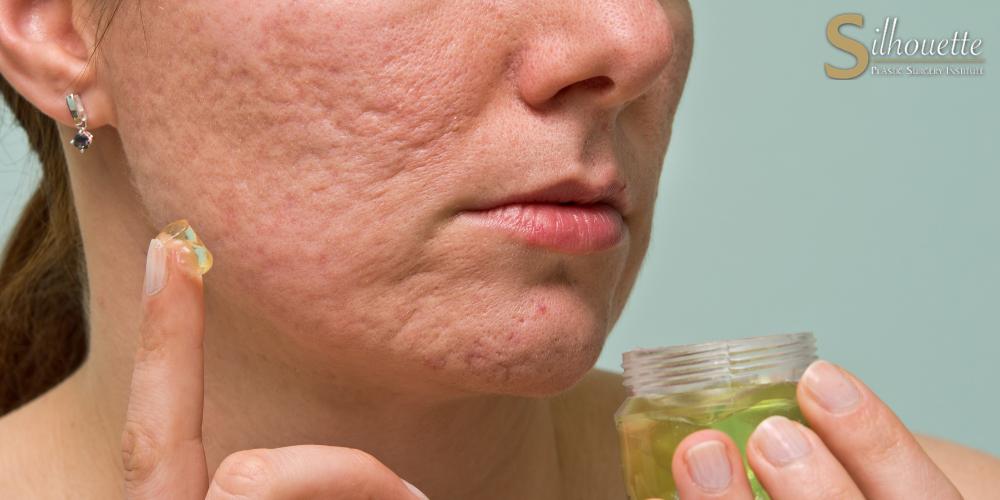
Alpha Hydroxy Acids
Alpha hydroxy acids (AHAs) are over the counter creams that can improve skin texture, smooth fine lines and wrinkles, and cleanse clogged pores according to the FDA. The most common AHAs are lactic acid and glycolic acid. These acids work by gently exfoliating the top layer of skin, which may improve the appearance of both acne lesions and acne scars.
Retinoids
Topical retinoids can smooth fine lines and wrinkles and generally improve skin texture by boosting collagen production. This means that retinoids can potentially reduce the appearance of acne scars. This type of treatment can only work for atrophic scars, not hypertrophic scars.
Salicylic Acid
Skin products containing salicylic acid are possibly the best and most popular acne treatment out there. Salicylic acid can remove dead skin cells, decrease inflammation, and cleanse clogged pores. The light exfoliation effect may be able to treat acne scars as well, especially shallow acne scars.
Sunscreen
While sunscreen will not remove acne scars, it can prevent them from becoming more noticeable overtime. Extensive sun exposure can make acne scars look even darker than they are, and therefore, more noticeable. Additionally, sun exposure speeds up the natural aging process, which can make acne scarring more noticeable. You will be doing your skin a huge favor by wearing facial sunscreen frequently, especially on sunny days or days you know you’ll be spending time outdoors.
How to Prevent Acne Scars
The best way to prevent acne scars is by managing acne as best as you can. If you have constant active breakouts, you can consider Accutane. For those that have mild to moderate acne breakouts, be sure to keep your skin clean, hydrated, and protected from the sun.
Also – as much as you may want to – avoid popping your pimples or picking at your skin. Forcefully popping your pimples will not only damage surrounding skin, but it will also clog more pores with dirt, oil, and sweat from your fingers.
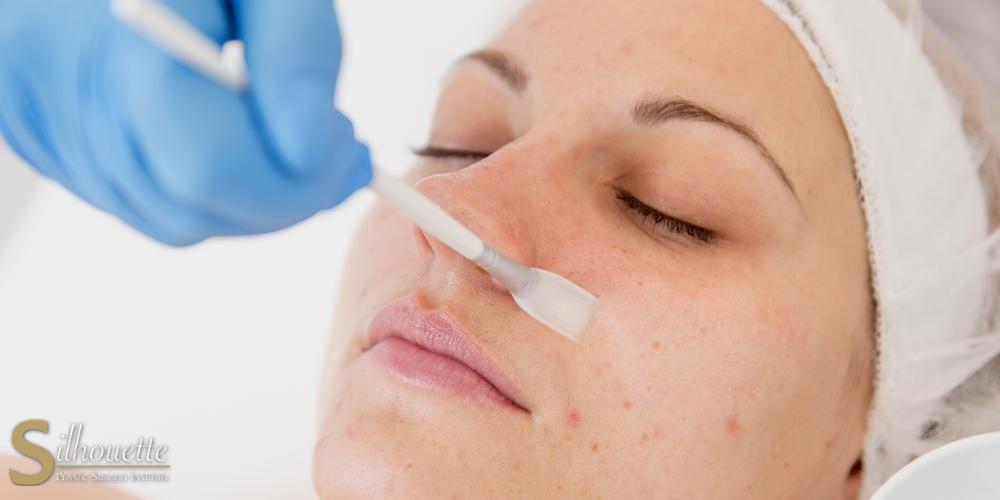
Acne Scars Treatment in Orange County and Bakersfield
Learning how to get rid of acne scars begins with your first appointment at the Bakersfield Med Spa at Silhouette Plastic Surgery Institute. Our team of estheticians will take a close look at your scars and determine which treatment is best for you. Call 949-359-8397 to schedule an appointment at our clinic today.
